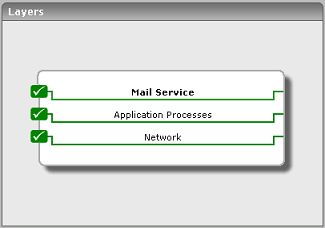Externally Monitoring the Exchange server
eG Enterprise prescribes an Exchange server model (already discussed) that requires an agent to be deployed on the Exchange 2000/2003 server to continuously monitor its internal health. However, some administrators might not have access to the Exchange mail servers for installing agents. Such administrators might at least want to know whether the Exchange server is available or not, and if so, how responsive it is to requests. To capture and view such external metrics alone, eG Enterprise offers the exclusive, External Microsoft Exchange server model (see Figure 1). Using a single eG external agent and no application-level instrumentation, this model can indicate the availability of the Exchange mail server, the efficiency with which it processes messages, the overall health of the network connection between the agent host and the mail server host, and the availability of critical TCP ports on the mail server.

Figure 1 : Layer model of the External Microsoft Exchange Server
Only the Network test is mapped to the Network layer; this external test, upon execution, reveals network bottlenecks that could be denying users access to the mail server. The TCP Port Status test that is mapped to the Application Processes layer indicates whether/not critical TCP ports are available. The Mail test that is associated with the Mail Service layer is executed by an external agent; the test emulates a mail send-receive activity to verify the availability of the mail server and the speed with which it sends/receives mails.
For an in-depth discussion on the Mail test, refer to Mail Test. For details regarding the other tests mapped to this layer, please refer to the Monitoring Unix and Windows Servers document.
